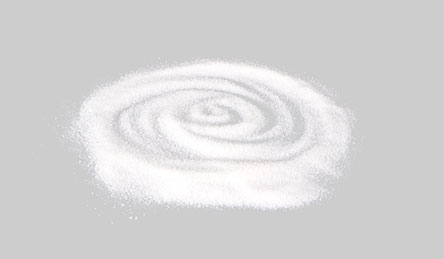
Search


Firstly, coal, natural gas or biomass is used as raw materials to convert to synthesis gas (CO+H2). The synthesis gas reacts with catalyst to produce liquid hydrocarbons, which are then refined by hydrogenation reaction to saturate oxygen-containing compounds and olefins, transforming them into mixtures mainly composed of alkanes. The crude wax of high-temperature iron-based mainly consists of alkanes of C20 to C70, and its normal alkane content is about 85%. After the crude wax is separated and de-oiled by short-range distillation cutting, different carbon number components are formed, such as C20 to C40 normal alkanes for 60℃ fischer tropsch wax, C30 to C50 normal alkanes for 70℃ fischer tropsch wax, and C30 to C70 normal alkanes for 100℃ fischer tropsch wax.
The FT synthesis process is the core technology of coal indirect liquefaction, and the catalyst systems mainly used are Fe-based and Co-based. Fe-based can be divided into low-temperature and high-temperature. fischer tropsch wax is derived from the intermediate product crude wax of the FT synthesis.
The crude wax carbon number produced by high-temperature Fe-based catalyst process is C20 to C90, and its normal alkane content is 85% to 90%. After being finely separated, high-temperature Fe-based crude wax mainly produces 60℃, 70℃, 95℃, and 100℃ fischer tropsch wax products. The oil content of 60℃ fischer tropsch wax product is 4% to 6%, and that of 70℃ fischer tropsch wax product is 2% to 4%. The highest drop melting point of high melting point fischer tropsch wax is 105℃, and its needle penetration is greater than 1, and the oil content is about 1%.
The crude wax carbon numbers produced by low-temperature Fe-based and Co-based catalysts are C20 to C90, and its normal alkane content is 95% to 98%. After being refined and separated, low-temperature Fe-based and Co-based crude wax mainly produces 52℃, 60℃, 70℃, 105℃, 110℃, and 115℃ fischer tropsch wax products. The oil content of 60℃ fischer tropsch wax product is 1. 4% to 1.7%, and that of 70℃ fischer tropsch wax product is 0. 3% to 0.5%. The highest drop melting point of high melting point fischer tropsch wax can reach 115℃, and its needle penetration is less than 1, and it almost does not contain oil.
Due to the longer carbon chain of Co-based wax, the melting point of the wax is higher. High-temperature Fe-based crude wax has an oil content about 5% higher than that of Co-based, and its needle penetration is greater, making the crude wax soft with low hardness. Therefore, Co-based fischer tropsch wax is more recognized by the domestic and foreign markets.
Traditional petroleum route uses the reduced two-line, three-line, and four-line oils (wax content is about 25% to 40%) of vacuum distillation as raw materials. The wax and oil are separated by the process of ketone benzene dewaxing. The oil can be refined into Class I and II lubricating oils or enter a catalytic cracking unit to produce olefins, naphtha, and diesel fuel. The separated wax is treated by high-pressure hydrogenation to remove substances such as sulfur, nitrogen, and aromatics to produce qualified paraffin products. Depending on the oil content, paraffin can be classified into semi-refined paraffin (oil content is less than 1.8%) and fully refined paraffin (oil content is less than 0.8%). There are mainly ten grades of fully refined paraffin, with melting points ranging from 52℃ to 70℃ with a 2℃ interval for each product. The main products sold in the market are 58℃ and 60℃ paraffin, and the carbon chain of paraffin is around C20 to C50, which is generally shorter than that of fischer tropsch wax.
The main application area for fischer tropsch wax and paraffin wax is the candle industry, and wax of grades ranging from 50℃ to 60℃ can be used.
Low melting point fischer tropsch wax, such as 52℃, 60℃, and 70℃ fischer tropsch wax, can achieve the quality of refined wax after de-oiling treatment, and can replace paraffin wax in the fields of candles, emulsified wax, packaging wax, and rubber protective wax. It is primarily a competition of cost, and the market is expected to be around 100,000 tons.
High melting point fischer tropsch wax, such as 105℃ fischer tropsch wax, can replace imported fischer tropsch wax and polyethylene wax in PVC processing, ink coatings, and rubber protection fields. When used as an external lubricant for PVC, due to the lower viscosity of fischer tropsch wax than polyethylene wax, 70% of the amount of polyethylene wax can achieve the same lubrication effect, and the product has good anti-oxidation ability and weather resistance.
In the above fields, the amount of imported fischer tropsch wax is around 20,000 tons, and it is estimated that China's domestically produced fischer tropsch wax can replace around 10,000 tons in the future.
At KH, we take pride in delivering top-notch products and unparalleled services that set new industry standards. Our mission is to empower your business with cutting-edge solutions, ensuring success at every turn. Collaborate with us and witness a transformative journey towards growth and prosperity. Embrace the future of excellence with KH by your side. Welcome to contact us and build up a partnership that redefines possibilities!